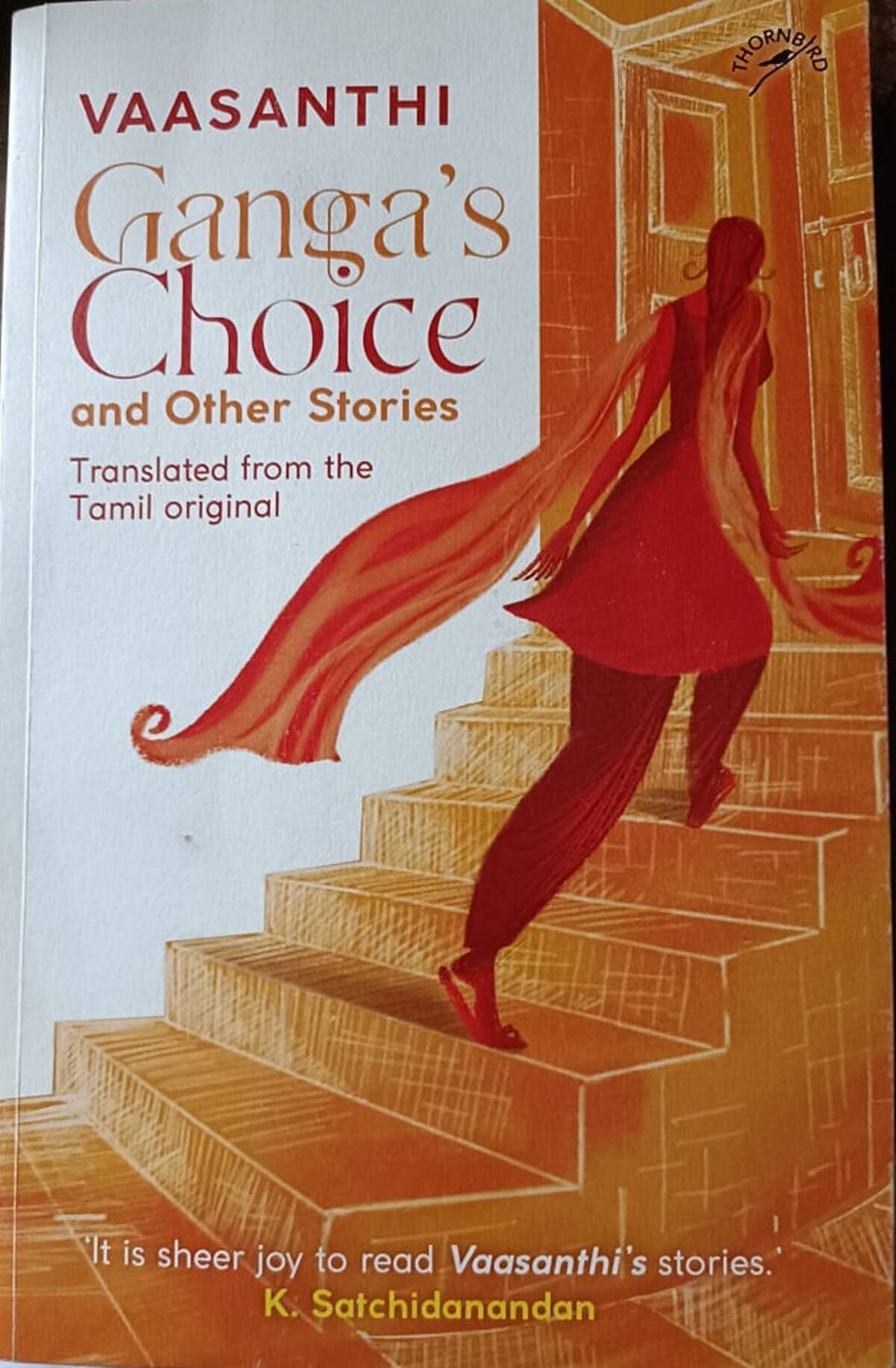SOURCE: INDIANEXPRESS
Ganga’s Choice and Other Stories, a collection of 15 short fiction in Tamil by Vaasanthi, and translated into English by Sukanya Venkataraman and Gomathi Narayanan, is about life seen through the eyes of women
The first story that Vaasanthi wrote, while in college, was published by Ananda Vikatan, a popular Tamil magazine, with the tag of “the best story of the week” in 1960. Its germ lay in a deeply upsetting incident in her extended family. She poured anger and angst at the treatment of a young widow onto paper, and it happened to be in Tamil. She chose a pseudonym, Vaasanthi, to not hurt her family. Another experience soon after resulted in a second story, also published in Ananda Vikatan. It made her think of writing as a career.
Vaasanthi has since, barring a short interlude to raise her two boys, been writing, in Tamil and English. She’s published nearly 50 books, including 30 novels in Tamil, and three fine biographies — J Jayalalithaa: A Portrait (2011), Karunanidhi: The Definitive Biography (2020), and Rajinikanth: A Life — in English (2021). For a decade, she edited the Tamil India Today, wrote a popular column, reported on subjects as diverse as the legacy of devadasis and Sri Lanka’s Eelam War.
Ganga’s Choice and Other Stories is a collection of 15 short fiction in Tamil translated by Sukanya Venkataraman and Gomathi Narayanan, who deserve a big thank you for bringing these stories alive in English. This representative collection stands out for its readability, clarity of thought and vision, and a distinctive authorial voice. Most of these stories have women as protagonists or are about life seen through the eyes of women. Most of these are set in urban spaces and feature rounded characters, who have immense self-respect and are unwilling to be subservient to the men in their lives or compromise when their integrity as human beings is questioned. Like a good journalist, Vaasanthi pieces together voices, incidents, anecdotes, memories to build the social backdrop, and then enters their emotional world, in the process transforming a bland crime report, news event, a squabble in a lower middle-class family, or a banal family function into art.
Take, for instance, the story “The Symbol”. Soundari Ammal, a celebrated Carnatic musician of yore, who at 82 is living with her brother’s family and in a world of memories. The journalist granddaughter of a friend from her youth tracks her down and interviews her for a magazine. The magazine story highlights Ammal’s devadasi background. It disturbs her family, which fears that the past would stigmatise their present. The story is deftly woven with voices from three generations — Ammal, Chellappa, her neighbour and the professor son of a nagaswaram artiste, Ammal’s granddaughter Mallika, and Mandakini, the journalist. This intricate weave helps the author to not just delve deep into the emotional world of Ammal but also explore the tension that runs deep within the devadasi community.
What does an artiste do in terms of rebellion? Do you sacrifice art for larger social freedoms? What happens when a tradition modernises? How do you deal with the trauma of the past? In the case of the devadasis, reform movements such as the anti-nautch campaign in the early 20th century succeeded in bringing in legal remedies to liberate a community trapped in a discriminating social pact. But it also forced many devadasis, who were custodians of classical art forms such as Bharatanatyam and Carnatic music, to abandon their practice and withdraw into their home. Proud women, who were acclaimed for their scholarship and artistic skills, lost their agency and art. The modernity that the reforms ushered in forced many of them to accept the hierarchies that patriarchy and the institution of family imposed on them. “The Symbol”, without ever slipping into a polemical discussion on these issues, forces the reader to confront these questions.
There’s a sentence that holds a key to access the many rooms in this story. As Mandakini arrives in the south Indian town, where her grandmother was born and led a mini revolution against the devadasi system, the summer sun hits her. “The heat was blinding, bleached white. Still, just as there seemed to be a connection between sun and colour, there seemed to be a link with art, music, sound and rhythm. Just like the link between lust, love, rage and humiliation.”
Ammal had refused to give up music when her friend, Rathnam, asked her to make the sacrifice for the larger cause. She had said, I would rather drink poison and die. But when an audience turns disrespectful to her while on stage, she quits public singing. She never explains why she ended her successful stage career, but tells her granddaughter, “Respect is different from what people believe to be.”
The notion of respect, self-respect, is a virtue dear to Vaasanthi’s women, irrespective of their class background. Be it Ganga (“Ganga’s Choice”), a domestic worker who decides to live on her own terms risking society’s censure and threat, or Panchali, in “Dance of the Gods”, who self-immolates when insulted by her husband, reveal a steel forged from a fierce sense of self-respect and honour. It is also the bedrock of the invisible, silent solidarity that the wife of a murdered man shares with the woman who has murdered him (“The Untold Story”).
There is another lot of stories — “He Came”, “The Line of Control”, “Gap” — developed from news events, such as the extended incarceration of innocent Muslims, the ill-planned pandemic lockdown, etc. These are shorn of rhetoric and reveal an empathetic voice that’s deeply concerned about a world insensitive to and criminally callous about the poor and the underprivileged. The fury and rage is the furnace where these stories have moulded, but the fire does not consume the form, the story.

